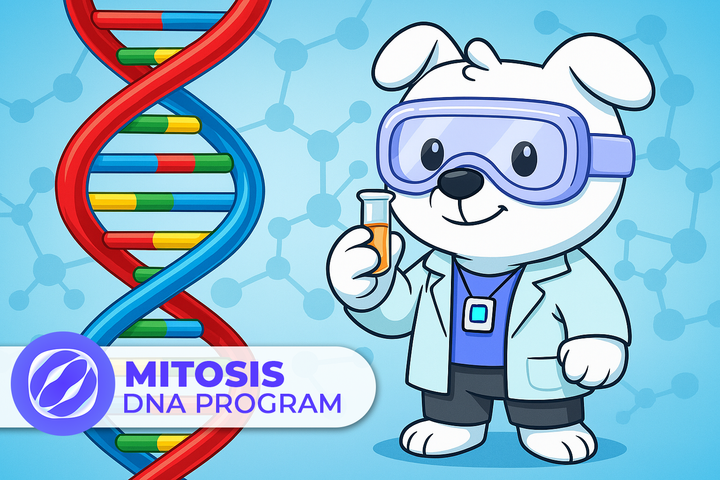Decentralized Liquidity Oracles: Enabling Data-Driven Yield Allocation

In the ever-evolving world of decentralized finance (DeFi), precision in liquidity deployment has become a critical differentiator. While many protocols continue to rely on static incentive models and manual governance decisions, a silent revolution is underway, driven by Decentralized Liquidity Oracles (DLOs). These oracles are laying the groundwork for real-time, data-informed liquidity allocation, positioning themselves as a foundational pillar of Ecosystem-Owned Liquidity (EOL). In the Mitosis ecosystem, DLOs are not just data feeds, they are governance enablers, automation triggers, and efficiency unlockers.
1.0. The Data Deficiency in Traditional DeFi
In traditional DeFi models, yield allocation decisions are often governed by speculative assumptions, historical data, or human governance votes that are infrequent and potentially biased. Protocols launch pools, offer rewards, and hope that liquidity comes and stays. This results in two core inefficiencies:
- Over-incentivized pools where capital sits idle with diminishing marginal returns.
- Under-utilized opportunities where demand is unmet due to lack of adaptive capital flow.
Without a responsive feedback loop between protocol activity and capital allocation, liquidity becomes sluggish, speculative, and fragile.
2.0. Introducing Decentralized Liquidity Oracles (DLOs)
DLOs are on-chain data mechanisms that track real-time protocol usage, LP performance, volatility, transaction volume, and more. Their job is to constantly scan the ecosystem and feed this information into Mitosis vaults and EOL mechanisms.
Think of them as the “nervous system” of liquidity management, delivering signals that allow protocols to adjust capital flow autonomously, with accuracy and agility.
Key metrics DLOs can track:
- APY fluctuations and risk exposure.
- Protocol demand spikes (TVL, swaps, mint/burn activity).
- Bridge usage across chains.
- LP health, slippage, and fee generation.
- Collateralization ratios in lending environments.
By aggregating and standardizing these inputs, DLOs enable smart liquidity reallocation, without relying on human intervention or outdated metrics.
3.0. From Governance Lag to Real-Time Responsiveness
One of the limitations of DAO-driven liquidity decisions today is the latency of human governance. Snapshot votes, discussions, and temperature checks all take time, and time in DeFi means opportunity cost. DLOs compress this cycle.
In the Mitosis framework, decentralized oracles act as governance extensions, not replacing human input, but augmenting it with data-driven rebalancing triggers.
Example:
- A protocol integrated with Mitosis sees a 30% increase in DEX trading volume over 48 hours.
- The DLO feeds this to the vault logic, which recalibrates LP weights to that protocol.
- Rewards are dynamically routed to the high-performing pools.
- LPs automatically gain exposure to better yield without needing to move assets.
This creates a governance flywheel: data informs action, which improves capital efficiency, which then generates new data, tightening the loop and strengthening EOL frameworks.
4.0. Eliminating Human Bias in LP <> Protocol Allocation
Manual capital allocation carries implicit bias: community favoritism, misjudged potential, and incomplete information. With DLO-enabled Mitosis vaults, these decisions are based on algorithmic logic fed by on-chain truth.
Rather than relying on subjective sentiment, LP allocations can be structured to follow:
- Minimum utilization thresholds (e.g., move capital if <20% TVL active).
- Protocol scoring (weighted metrics like TVL growth + user count + revenue).
- Real-time risk modeling (pull liquidity if volatility spikes above x%).
This eliminates "stickiness bias" where protocols keep receiving liquidity due to inertia rather than merit, and shifts EOL toward performance-based alignment.
5.0. Enabling Adaptive, Cross-Chain Liquidity Distribution
Mitosis isn’t limited to a single ecosystem, it is fundamentally multi-chain native. DLOs are essential for this architecture to function optimally.
By integrating with oracles across multiple chains, Mitosis vaults can observe where yield is most efficiently earned, and reallocate accordingly. For example:
- Avalanche sees low gas + high yield on lending protocols.
- Solana offers high-speed AMM volume surges.
- Arbitrum has cooling DEX volumes.
Instead of users having to bridge and chase these opportunities, Mitosis rebalances capital across vaults based on DLO metrics, abstracting complexity and maximizing yield across the DeFi landscape.
6.0. Use Cases Already Emerging
Protocols like Mitosis are at the frontier of integrating DLO logic into production. Some emerging use cases include:
- "Dynamic vaults" that route liquidity to the most efficient pools every epoch.
- Reward splitting logic based on actual LP ROI, not promise.
- Risk-adjusted scorecards that gate how much a protocol can receive from shared EOL vaults.
- Event-driven rebalancing like liquidity migration based on TVL threshold breaches or smart contract upgrades.
As these models mature, we’ll move away from "incentivize and hope" to "allocate and prove."
7.0. Challenges to Address
Like any early innovation, DLOs come with challenges:
- Data integrity: Ensuring the oracles themselves aren’t manipulated.
- Latency: Making real-time rebalancing computationally efficient.
- Governance overrides: Balancing automation with human veto power.
- Cross-chain syncing: Managing consistent oracle states across multiple blockchains.
Mitosis addresses these through a blend of oracle redundancy, modular governance modules, and smart contract checkpoints that validate before moving capital.
8.0. A Glimpse Into the Future
Imagine a future where DeFi protocols plug into an autonomous liquidity grid, powered by oracles, driven by data, and optimized by design. Where Mitosis acts as the “yield router,” and users simply deposit into a single vault, trusting that their capital is always earning the best, safest yield available across chains.
In this world, governance evolves too:
- Votes become about setting parameters, not managing operations.
- Community input focuses on strategy, not execution.
- DAOs act like asset allocators, with automated rebalancing based on market signals.
This is not theoretical. It’s the Mitosis roadmap, EOL governed by DLOs, producing composable, intelligent, and sustainable liquidity.
Conclusion: Oracles as the Brain of EOL
In summary, Decentralized Liquidity Oracles are the missing link between raw on-chain data and optimal liquidity management. By embedding DLOs into Mitosis vaults, we’re moving toward an era where yield is algorithmically earned, fairly distributed, and transparently governed.
This transforms LPs from passive providers into data-backed stakeholders, and positions protocols for sustainable, merit-based liquidity flows.
As DeFi grows more complex, only those systems built on real-time, unbiased, and automated infrastructure will survive. Mitosis, with DLOs at its core is building that future.
Are you ready to be part Mitosis Community?



Comments ()